
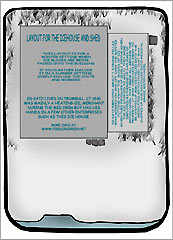
Ice House - $$4.95
The small farm buildings used to store ice through the summer can usually be recognized by their thick insulated walls and few windows. Early examples have low ventilators on the roof. This Ice house is a larger commercial one that used to live at Trumbull Connecticut till about 1954 called the Ed Katz Ice House.
New England Commercial Ice House
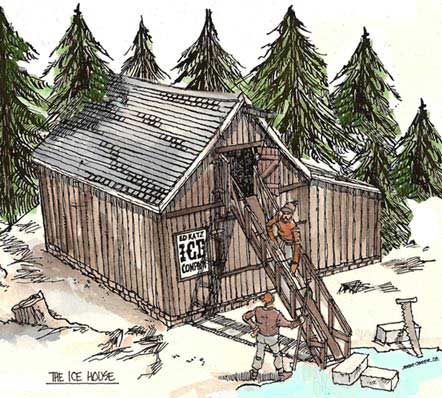
The use of ice for refrigeration became popular in New England by the middle of the nineteenth century, especially as farmers shifted to dairy production.
The small farm buildings used to store ice through the summer can usually be recognized by their thick insulated walls and few windows. Early examples have low ventilators on the roof.
Often located under evergreen trees or other shady locations, many icehouses have a small entry room lit by a small window and an insulated room, connected by air ducts to the ice storage space, for storing dairy products and meats. Straw and sawdust was often used to increase the longevity of the ice.
Occasionally, brick or stone-walled ice houses where built into a bank of earth with an entrance facing the north.
New England Icehouse History
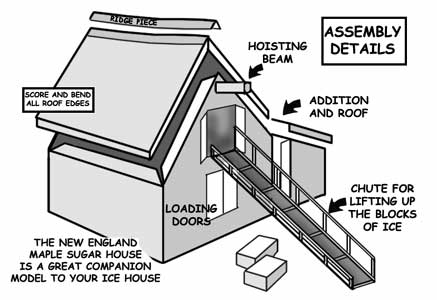
The Cultivator offered this advice in 1864:
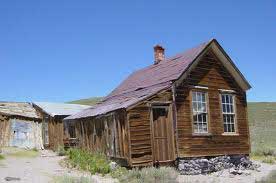 A cheap Ice-House may be quickly constructed, in the form of board
shanties, with a good but not tight floor. Place a few inches
of sawdust on the floor, pile up the ice compactly in square blocks,
leaving a space of 8 to 12 inches all around next to the boards,
to be filled with sawdust, trodden in, as the structure of ice
is built upwards. Cover the whole with 8 to 10 inches of sawdust,
and let plenty of fresh
air blow through the shanty over the top. Ice will keep in this
way as well as in the most costly and elaborate building.
A cheap Ice-House may be quickly constructed, in the form of board
shanties, with a good but not tight floor. Place a few inches
of sawdust on the floor, pile up the ice compactly in square blocks,
leaving a space of 8 to 12 inches all around next to the boards,
to be filled with sawdust, trodden in, as the structure of ice
is built upwards. Cover the whole with 8 to 10 inches of sawdust,
and let plenty of fresh
air blow through the shanty over the top. Ice will keep in this
way as well as in the most costly and elaborate building.
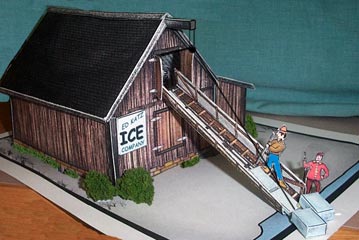
The point settled in building ice-houses is, that the whole ice-house should be built above ground. This is the practice in Massachusetts. There is no substance equal to a confined space of air for the walls of ice-houses. Build of whatever substance you please, so that you have a double wall, tight enough to hold air, and you will have the perfect protector of ice. . . . Ventilation is necessary when you desire to keep food sweet. If there is no ventilation, the confined air soon becomes very foul from animal substances on ice.
Icehouses did not become common farm buildings until well into
the nineteenth century. By that time it was recognized that ice,
which could be conveniently harvested at no cost except for labor,
would prevent expensive spoilage of meat and dairy products.
Nearly every farm had access to a nearby pond or lake from which
the ice could be sawed and hauled on sleds to the icehouse.
The structural considerations in building an efficient icehouse
were outlined in the 1881 book Barn Plans and Outbuildings:
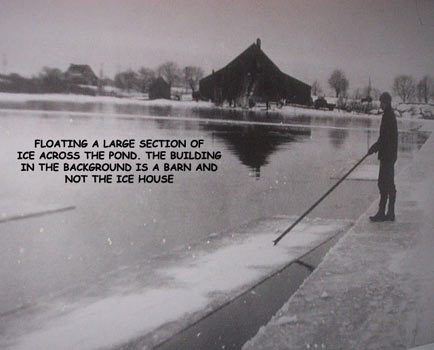 There are some general principles to be observed in the proper construction of any kind of ice house, and all else is of secondary importance. There must be perfect drainage beneath, ample ventilation and perfect dryness above, and sufficient non-conduction material for packing below, above and around the ice, by which its low temperature may be preserved. |
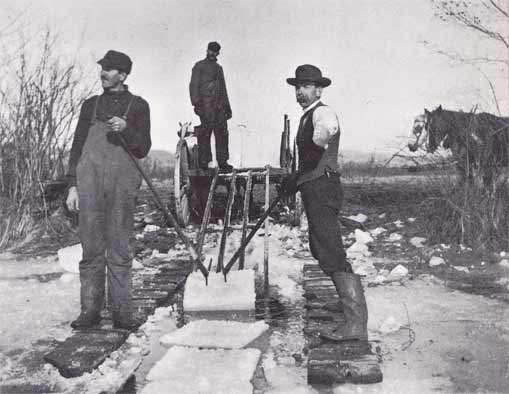 Ice harvested from the rivers and ponds of New England was a highly valuable cash crop in the 19th century. These ice houses shipped to other parts of the US as well as tropical nations. In 1890 3 million tons of ice were cut in Maine alone, requiring 25,000 men and 1,000 horses. |
The recommended packing, or insulation, was sawdust, charcoal
powder, straw, or march hay.
Usually the icehouse was sunk a foot or tow below the ground level
in dry, porous soil and then built up with inner and outer walls
between which the insulation was packed. The recommended roof
had broad, overhanging eaves to shade the walls as much as possible.
Some icehouses were built so that the ice could be stored above
an open storage space. This type required much stronger walls
to support the weight of the ice and were generally made of stone
or brick. Except for a ventilator at the top of the roof, extreme
car had to be taken to make the ice storage space both airtight
and watertight. Any drafts capable of passing through the floor
would melt away the ice in a very short time.
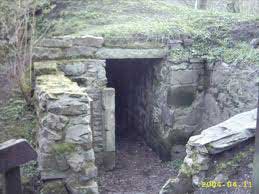
Modern refrigeration methods have made the icehouse obsolete,
and very few remain now.
"Icehouses, once common enough on the better farms
of America, have with few exceptions. long ago been made over
into extra chicken houses or split up into kindling wood....To
put up ice one must have good water - a pond or lake, a river
or stream with a sizable pool of deep water. Many of the first
farm ponds were built, not to supply water, but to supply ice.
The ice harvest usually came toward the end of January or early
in February, when the ice was about ten inches thick. The best
temperature for cutting was a f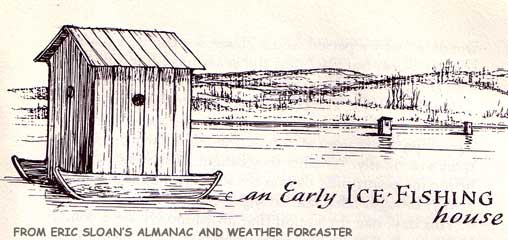 ew
degrees below freezing, so the water would freeze quickly on the
cakes after they were taken out of the pond. but it seemed that
it never was a pleasant twenty-five degrees; frequently it was
zero or below.
ew
degrees below freezing, so the water would freeze quickly on the
cakes after they were taken out of the pond. but it seemed that
it never was a pleasant twenty-five degrees; frequently it was
zero or below.
Men did not dare to wait, for too often a zero spell in the Northern states is followed by a thaw which would spoil the ice. After the snow was scraped from the area, the ice was plowed out. The ice plow was a weighted, horse-drawn contrivance with a row of sharp teeth which cut a narrow furrow six or seven inches deep. A marker scratched a line for the next cut. The plow was run one way over an area, then over the other at right angles, plowing out a checkerboard pattern of cakes of a more or less standard size, 22 inches by 12 inches, weighing about a hundred pounds.
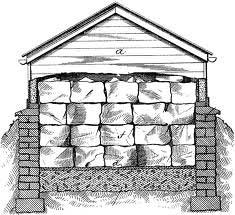 Sometimes the cakes were broken apart with a boar, but
particular people liked to have the edges smooth, so the last
two or three inches were sawed by hand. The ice saw was straight-bladed
and four or five feet in length with a handle like a lawn mower.
After the cakes were cut, they were poled through the dark water
to shore. Here a long plank sloped into the water; the trick was
to give the cake of ice enough momentum so that its weight would
carry it up where someone with a pair of tongs could snag it.....
the ice was hauled to the ice house on two-horse bobsleds. Layer
by
Sometimes the cakes were broken apart with a boar, but
particular people liked to have the edges smooth, so the last
two or three inches were sawed by hand. The ice saw was straight-bladed
and four or five feet in length with a handle like a lawn mower.
After the cakes were cut, they were poled through the dark water
to shore. Here a long plank sloped into the water; the trick was
to give the cake of ice enough momentum so that its weight would
carry it up where someone with a pair of tongs could snag it.....
the ice was hauled to the ice house on two-horse bobsleds. Layer
by 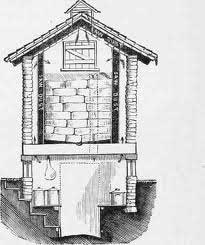 layer the old weathered ice house was filled.
layer the old weathered ice house was filled.
A sprinkling of dry sawdust was scattered between each layer of cakes. This made them easier to separate when they were taken out. A two-foot-wide layer of sawdust was tamped lightly between the ice and sides of the building. After the last layer was pushed up the long, oak plank, the whole heap was covered a yard deep with sawdust. Some farmers not only cut ice for their own needs, but for neighbors. The going price was five cents a cake. But the thrifty farmers wanted their own ice-cutting equipment.
It took an average of three hundred cakes to last a family through the summer; at five cents a cake this was fifteen dollars, one-third the price of a good cow....No one knows when a farsighted colonial farmer first conceived the idea of storing ice to use in hot weather. Old records reveal that many icehouses were built in New England after the Revolution."
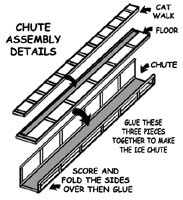
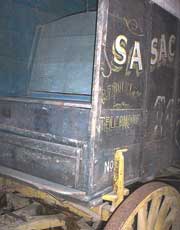 One of the region's major exports during the nineteenth century was ice. In the days before modern refrigeration, large blocks of ice were cut from local ponds and the Penobscot River and stored in large iceshouse. Packed in sawdust for insulation, the ice could keep throughout the summer months and be shipped as needed to any port from Boston to Brazil.
One of the region's major exports during the nineteenth century was ice. In the days before modern refrigeration, large blocks of ice were cut from local ponds and the Penobscot River and stored in large iceshouse. Packed in sawdust for insulation, the ice could keep throughout the summer months and be shipped as needed to any port from Boston to Brazil.
On the Penobscot, in order to reach the channel where deeply laden craft could navigate, large crib works built of heavy timber and ballasted with rock were place many yards out from the shore and use as loading stages. these platforms, some forty feet square, were connected with the icehouse on shore by long chutes. The ice was shot down theses chutes into the holds of the waiting vessels.
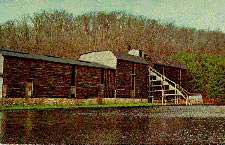 The Kaatz Ice House (from the internet)
The Kaatz Ice House (from the internet)
The old ice house was built against a pond located on Whitney Avenue, alongside of present day Teller Road. Ice harvesting from the pond began in the 1800's. Large blocks of ice were cut in the winter, lifted by an elevator, and then stacked in the ice house. To help prevent the huge blocks of ice from melting they were covered with sawdust so they could be sold in the warmer months. Before 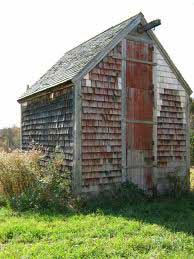 refrigerators were available, people would place their perishables in an ice box. The ice man delivered the blocks of ice to homes with his horse drawn carriage, from which he would usually also sell coal and sometimes rags. A placard was placed in the windows of any homes requiring ice with a number indicating the block size to be delivered. In 1904, Mr. E. Kaatz acquired the ice house on Whitney Avenue as part of a settlement when the partnership in a previous ice business he was involved in broke up. The Kaatz family continued operation of the ice house until 1955. In 1969 the town acquired this property and in May of 1978 the ice house was demolished because town officials felt that the structure had become too unsafe due to its rapidly dilapidating condition. After the ice house was demolished, some people felt that more should have been done to preserve the building since it was the last standing ice house in New England. Today the Trumbull Veterans Organization, comprised of American Legion Post 141 and VFW Post 10059 have a meeting hall located at Kaatz's pond. The veterans run bingo games almost every Tuesday and Wednesday evening and hold a wonderful fishing derby for all the children of the town each spring.
refrigerators were available, people would place their perishables in an ice box. The ice man delivered the blocks of ice to homes with his horse drawn carriage, from which he would usually also sell coal and sometimes rags. A placard was placed in the windows of any homes requiring ice with a number indicating the block size to be delivered. In 1904, Mr. E. Kaatz acquired the ice house on Whitney Avenue as part of a settlement when the partnership in a previous ice business he was involved in broke up. The Kaatz family continued operation of the ice house until 1955. In 1969 the town acquired this property and in May of 1978 the ice house was demolished because town officials felt that the structure had become too unsafe due to its rapidly dilapidating condition. After the ice house was demolished, some people felt that more should have been done to preserve the building since it was the last standing ice house in New England. Today the Trumbull Veterans Organization, comprised of American Legion Post 141 and VFW Post 10059 have a meeting hall located at Kaatz's pond. The veterans run bingo games almost every Tuesday and Wednesday evening and hold a wonderful fishing derby for all the children of the town each spring.


